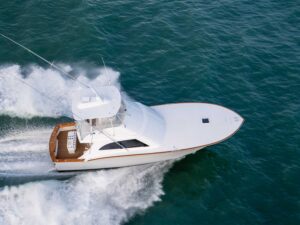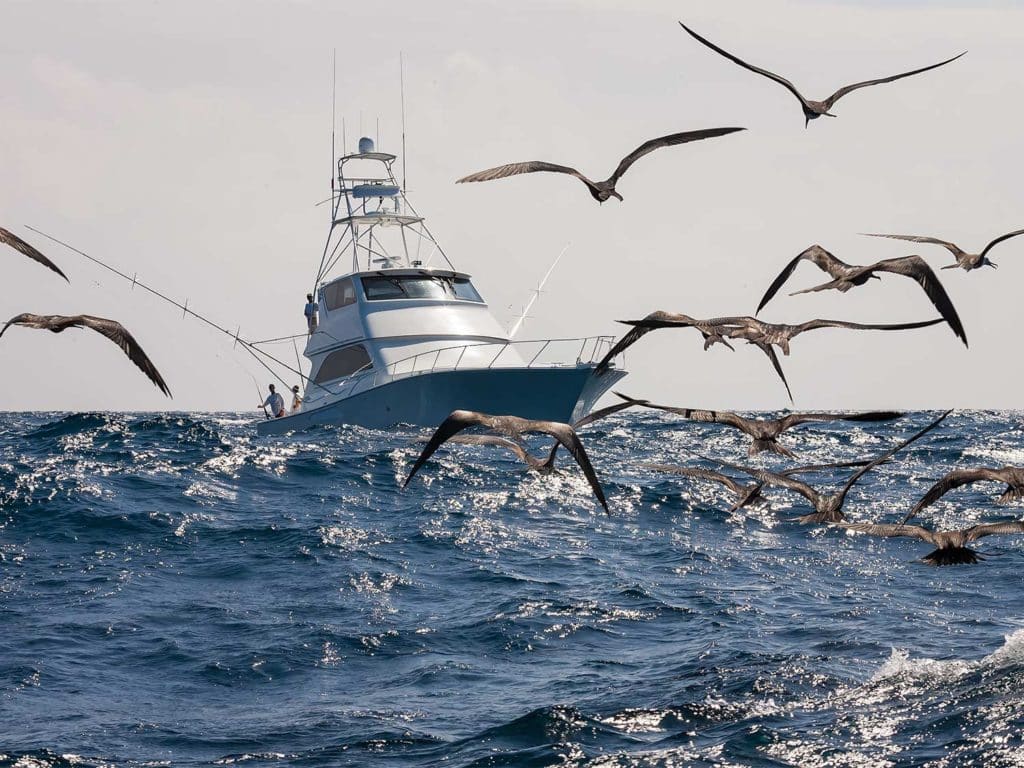
The choices are varied when deciding if your next fishing boat will sport an open flybridge with a hardtop and crystal-clear enclosure or, perhaps, you’ll opt for a climate-controlled enclosed-bridge command station instead. Although many skippers take sides when it comes to their favorite design, and for no shortage of logical as well as personal reasons, more often than not, it is the owner’s choice that finally decides the matter. Studying the purpose and accommodations of the layout provides a definite view of the benefits, attributes and limitations of each style.
The open bridge today is a far cry from its origins as simply a place to operate the boat with heightened visibility, in spite of being totally unprotected from the environmental elements of sun, wind, salt spray and rain. I recall seeing photographs of old boats from the 1940s and ‘50s with flybridges that were minimally equipped, with just a single chair, the wheel, engine controls, and wiring fed through a tube in the roof from the lower station. On the deck, a glass port offered the captain a view of the engine gauges below on the console, while the front and side bridge wings were made of canvas that was secured to metal piping screwed to the roof. Chrome-plated bronze step plates on the house sides and the piping above served as grab points, providing passage to the bridge from the cockpit. Utilitarian, yes, but that’s the way it was. These days, the flybridge has thankfully evolved (at least) tenfold, and has also enhanced what was once a simple platform with a multitude of critical features that a captain needs to do his multitasked job successfully and efficiently.
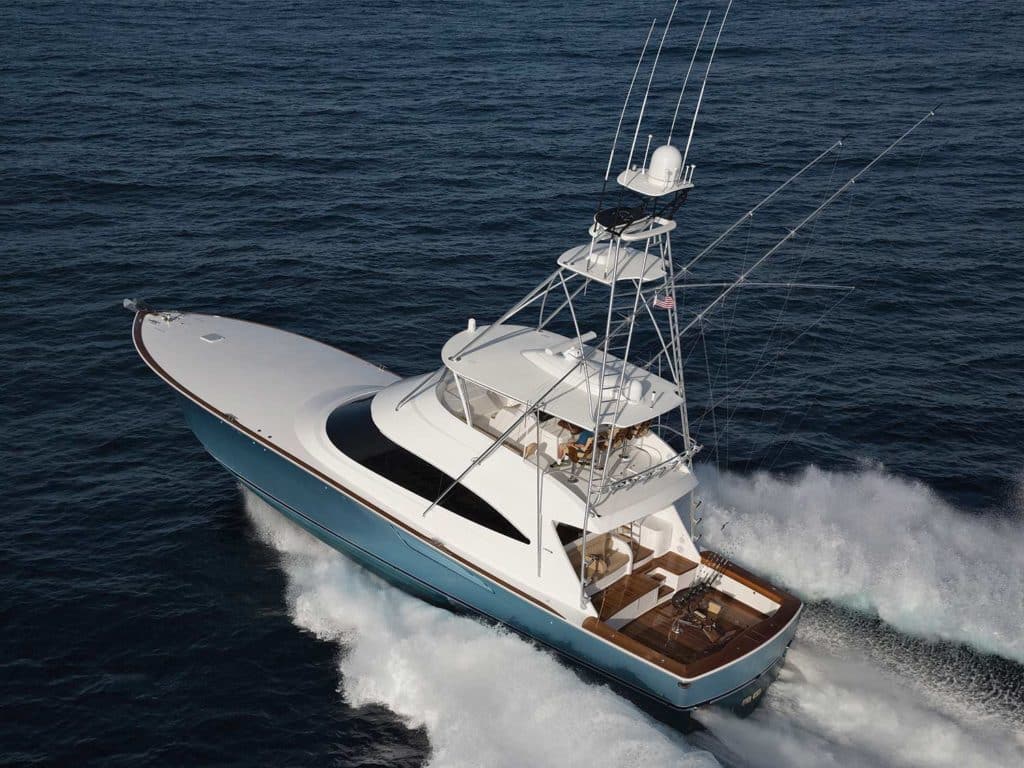
Design and Function
Operator visibility for fishing and safe navigation in all weather and sea conditions is crucial, and the helm layout on a flybridge reverts back to design and function. Running a boat might look like fun to the uninformed, but in truth, steering a 60-footer that displaces almost 100,000 pounds and cruises along at 30-plus knots is both exhilarating and tense at times due to changing ambient conditions. Undivided attention is mandatory, and a properly designed bridge is meant to help get the job done safely.
Two prevailing styles include the centerline helm station with a walkaround center-console featuring passageways forward to both port and starboard, and the peninsula design that favors passage to one side. The choice is often dictated by the size of the boat, but especially by the width and length of the deckhouse. A flybridge with wings that extend to the outmost measurements of the deckhouse will arguably offer more square footage for seating, moving about, storage and other appointments. But either way, the most important factor is that when you stand behind the wheel and operate the boat through all throttle settings, the view is unobstructed looking forward and side to side, as well as down into the cockpit below.
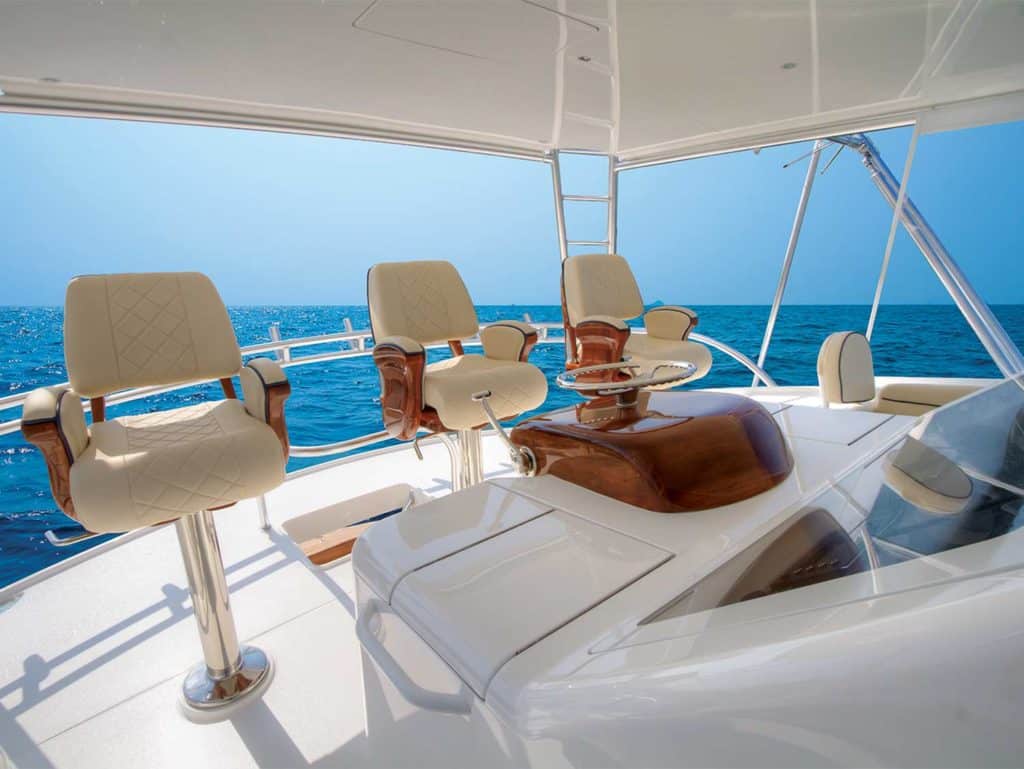
On larger vessels, it is not uncommon to incorporate a raised helmsman platform to boost the height of the operator for enhanced visibility forward. Savvy boatbuilders sometimes take advantage of the platform to include storage inside the shell. The amount of helm seating is a choice that needs to be decided, but the decision should take into account more than just the number of chairs. Is there sufficient room to easily access the fishing rods stowed along the aft belly rail without disturbing the operator, or a passenger who is already seated? Will a third chair crowd the access to the flybridge ladder? Is there room for grab rails or a hatch for secure movement up and down? And finally, how many people does the captain really want on the bridge anyway? Likely as few as possible.
More alternatives are conveyed in selecting the console layouts. A center-console helm can leave room for flanking lounges that also conceal storage, such as a dry space for loose gear or safety items. On long runs, the lounges are particularly inviting for relief crew to sack out. Removable backrests can be built into the lounges so occupants can stretch out and face forward while the boat is underway, or reversed to face aft, transforming the lounge into a jump seat for spotters to watch the spread. Space in front of the console can be utilized to include another lounge, a table with built-in storage, a big freezer, a refrigerated drink box, and/or a sink outfitted with a freshwater outlet and a washdown hose for rinsing salt from the enclosure for increased visibility after a long, wet run, or for spraying down the bridge area on the way back to the dock. Forward is a cavernous stowage area in the brow that often houses air horns and air-conditioning units.
The peninsula-style helm is equally functional, although the configuration of storage and lounging might be quite different. The bridge deck is wrapped in three-sided enclosure panels for visibility and weather protection, while vents in the top portion provide a fresh breeze while still protecting the bridge occupants from direct spray and rain.
Electronics take up most of the space in both of these helm layouts but do allow for maximum customization. Some consoles are designed with angled pods to flush-mount displays beneath a clear acrylic panel with other accessories, switches and controls in full view while offering the equipment protection from the elements. This arrangement generally allows sufficient access inside the console to reach wiring, connections, steering and other systems, as well as storage for bulkier items such as life jackets and throw rings. Another popular approach is to mount the electronics so they rise up from inside the console with an electric or hydraulic lift. However, this also means that the equipment is exposed to the elements while in use. To prevent engine instrumentation and other equipment from crowding the helm but still be in reach and visible, drop-down compartments or molded-in overhead pods are commonly installed in the underside of the hardtop. Teaser reels and other electronics also find homes in the hardtop directly above the captain’s chair.
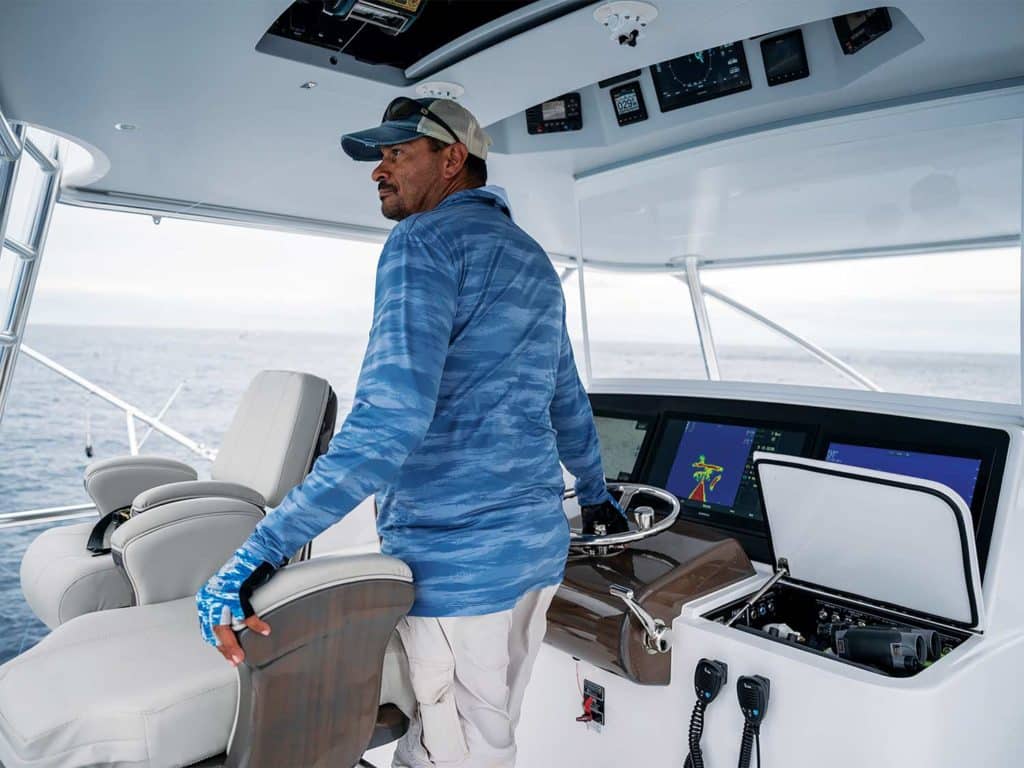
Enter the Enclosed
The evolution of the open flybridge has made it a seagoing work of art that can check every box for fishing prowess on the edge—to raise, hook, and release or boat a trophy—but the constant exposure to hot and cold environments, the sound of whipping wind, sheets of spray crashing against the enclosure, engine noise, vibrations, and the banter on the VHF radio all take a toll on the captain in the form of accumulated fatigue. And while there is no denying the popularity and purposefulness of the open bridge, there might come a time when creature comforts and quiet time become sought-after issues, especially for programs whose run times to the fishing grounds are extended. It is here where the enclosed flybridge becomes a significant player.
Unlike an open-bridge design, which is truly the sum of numerous individual parts fastened together, an enclosed bridge is generally singular in form and function. The molded roof, windshield mullions and bridge superstructure become a single unit with a solid, watertight door on the bulkhead that opens out to a bridge deck to access the cockpit. The control station on the enclosed bridge is forward on the centerline, and the closest thing to the helmsman’s eyes is a solid-glass windshield that delivers uncluttered, unobstructed visibility. Electronics surround the steering wheel for easy viewing and operation, and the hardtop overhang helps to control glare and water reflections.
One of the most important accessories at the enclosed-bridge helm is a camera monitor that keeps the operator informed about conditions around and throughout the yacht. Seating options are varied, but a popular layout features an adjustable helm seat with passenger seating or lounges to port and starboard. Another endearing aspect of the enclosed bridge is the spacious area aft of the helm, which often gets tagged as a second salon with a sofa or dinette. A line of cabinetry opposite the lounge seating houses accoutrements, including refrigeration, a sink, an entertainment system and additional storage. And almost always, a staircase is installed and directly connected to the salon on the main deck.
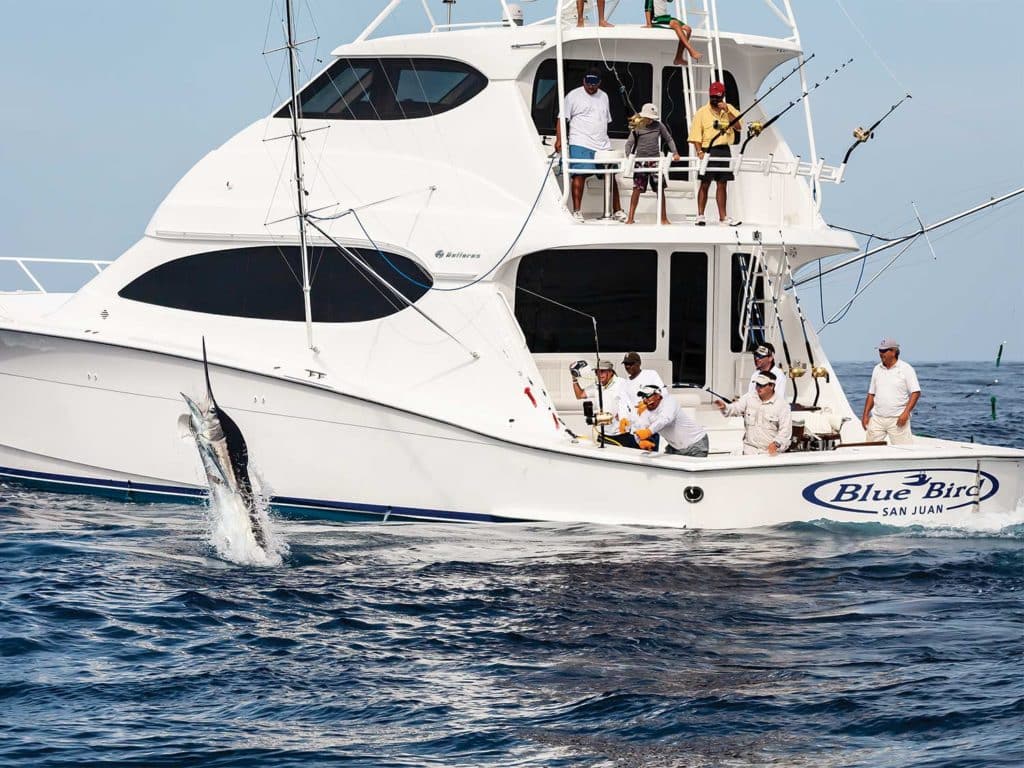
Back when I ran an open-bridge convertible, I filled in for a friend who owned an enclosed-bridge boat to run a nighttime bluefish charter. I had plenty of experience running at night with my boat, but my first trip operating from an enclosed bridge at night was all it took to realize some of the benefits of this design. We caught plenty of fish for the charter group that evening, but I was more impressed with the quietness of the ride to and from the offshore grounds. Even the ringing 6-71 Detroits sounded well-mannered that night, and unlike my open bridge, where I was always damp with salt air and exhaust mist, I was dry, warm and comfortable. The experience left me envious, thinking of my next several Hudson Canyon trips and the one-way 75-mile jaunt from New Jersey’s Manasquan Inlet, a run that always seemed longer on the way home.
The comfort afforded by a climate-controlled enclosed bridge is unchallenged by the ride in an open-bridge boat, particularly in riotous seas or inclement weather. And without having a deck to wash, an enclosure to chamois or seat cushions to wipe down, taking care of the interior and exterior of the enclosed bridge is a snap; a quick pass with a vacuum, a microfiber cloth to wipe down the woodwork, and a generous outside rinse with Spot Zero water is usually enough to remove salt and keep the windows clear and spot-free.
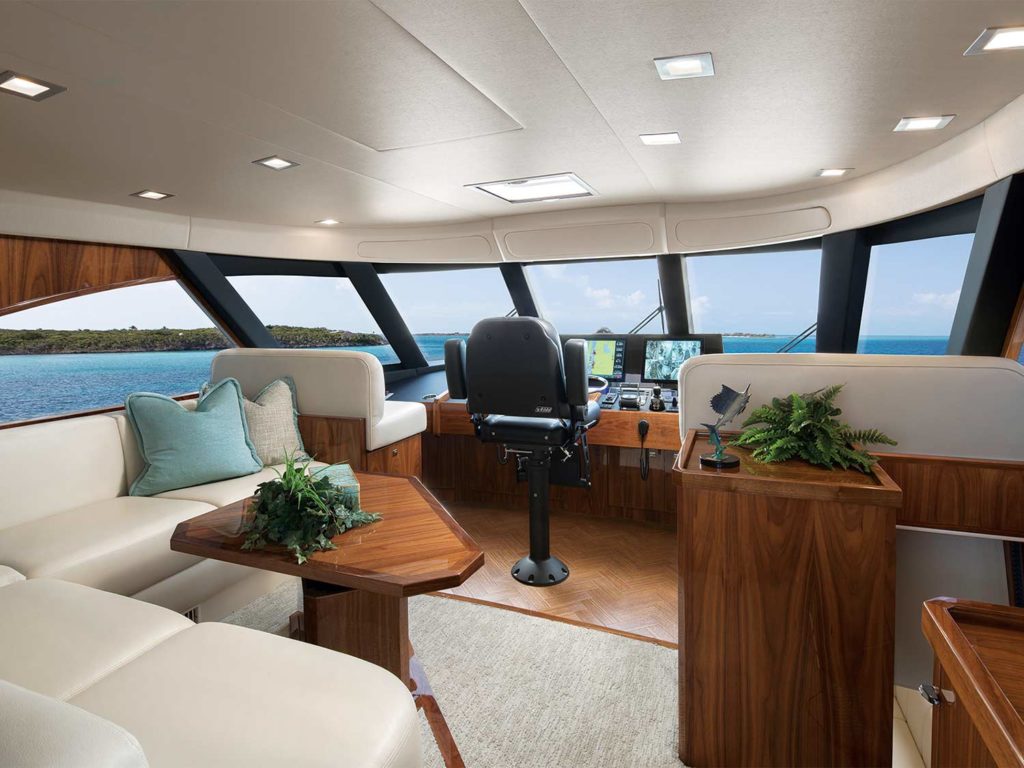
Changes in Design and Strategy
Fishing from an enclosed bridge can be quite a different story than fishing from an open bridge, and it does require significant changes to your strategy. Capt. Mike Hunter of Princess Lily, a Palm Beach, Florida-based 66-foot Viking enclosed bridge, splits his time between fishing from the aft helm station on the bridge deck and from the tuna tower. With remote screens at both the aft helm and in the tower, he can monitor his electronics and operate the teaser reels trouble-free. The crew use headsets to help with back-and-forth communications between the helmsman and the cockpit, relaying and receiving information to minimize yelling and confusion. Since his bridge-deck helm is on the starboard side, Hunter likes to fight his fish in a right-hand turn because he can see the angler, the rest of the crew and the fish more clearly. And even though he can see through the aft window and through the windshield from inside the bridge, he still is concerned with the restricted view of the port side and will move around regularly to verify that no traffic is nearby. Training himself to be more cautious in looking out for small boats keeps him alert and his anglers connected to more fish. The view into the cockpit, however, is spot-on, and he can see everything at a glance and not just settle for watching the rod tips. Similarly, by looking aft when in the tower, he can observe, advise and direct his anglers to where their baits need to be. To make his top-flight work more accommodating, he also has equipped the tower pod with a removable, wraparound clear panel that extends vertically from the top of the pod to the buggy top to counter those long hours of cold northerly winds when the sailfish are biting in South Florida.
Brielle, New Jersey-based skipper Capt. Bill Sevistakis has won and placed in mid-Atlantic marlin and tuna tournaments while running a 65-foot Hatteras enclosed bridge with a tower, and a 74-foot Viking enclosed bridge with no tower. He appreciates the comfort, flexibility and convenience that the enclosed-bridge style offers more than the many open-bridge convertibles he has operated in his long career in the Northeast to the Caribbean. As a youngster in St. Croix, Jamaica, he worked with his grandfather, who fished an enclosed-bridge boat, and quickly noted the benefits of not wearing the ocean at the end of the day.
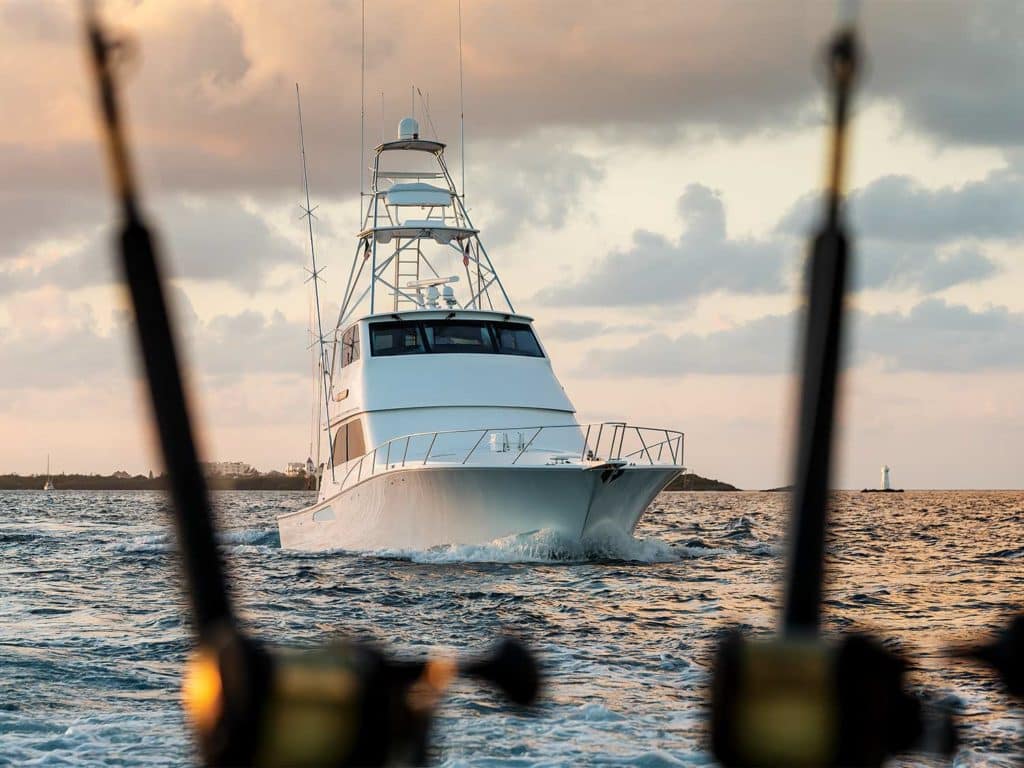
Like any design, the enclosed bridge is not without shortcomings. Sevistakis points out that storing fishing rods can be an issue because the enclosed bridge often lacks those long seating benches that are seen on open boats, while Hunter notes that the space inside the enclosed bridge can be limited when it comes to the conveniences of a full-size food or bait freezer like those typically found on big open-bridge convertibles. But both skippers do agree that on long-range trips, the enclosed platform provides the quiet comfort that many are after.
With so many excellent choices on the market from a variety of production and custom builders, the choice really hinges on how you plan to use the boat, as well as your fishing style, the prevailing local weather conditions and more. You really can’t go wrong with either design, just be sure to evaluate your needs and educate yourself of the options.
Option No. 3
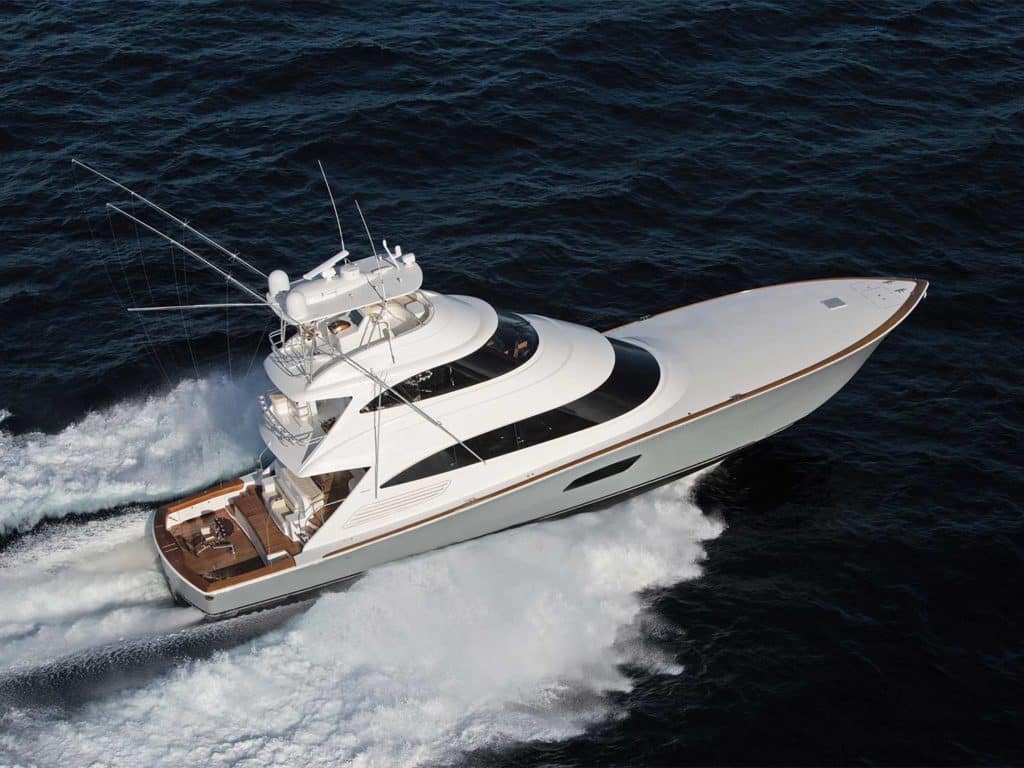
Proving that the sky is indeed the limit in big enclosed-bridge convertibles, one option is installing an open flybridge above the enclosed bridge in lieu of a tuna tower. Known as a skybridge, a ladder on the aft bridge deck leads to a peninsula-style helm with pedestal seats, and a scaled-down lounge. A fiberglass hardtop and a three-sided enclosure provide weather protection in what might be called the best of both worlds—and then some.
This article originally appeared in the December 2021 print issue of Marlin.
